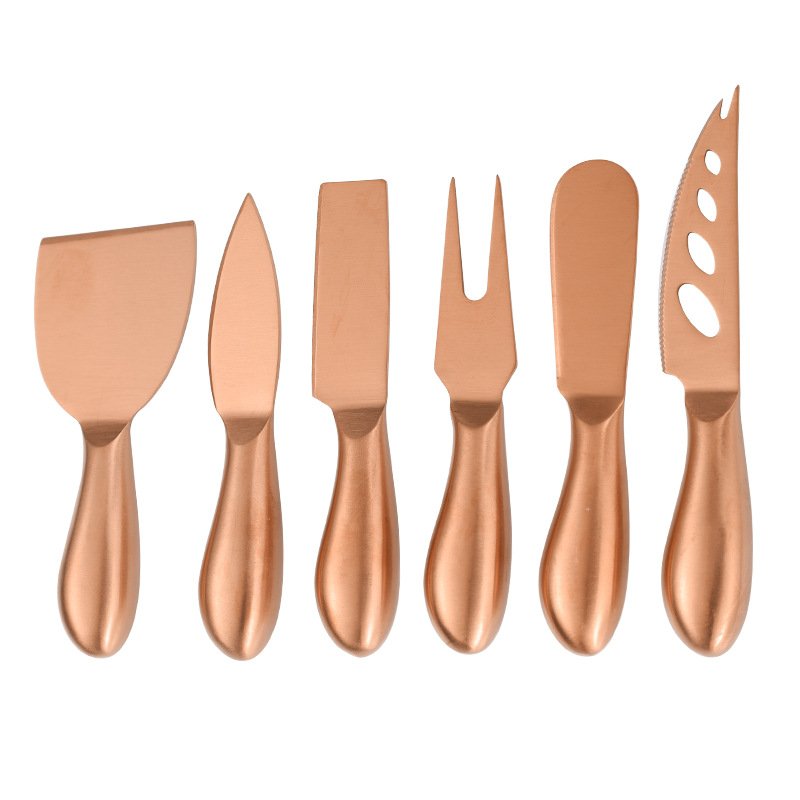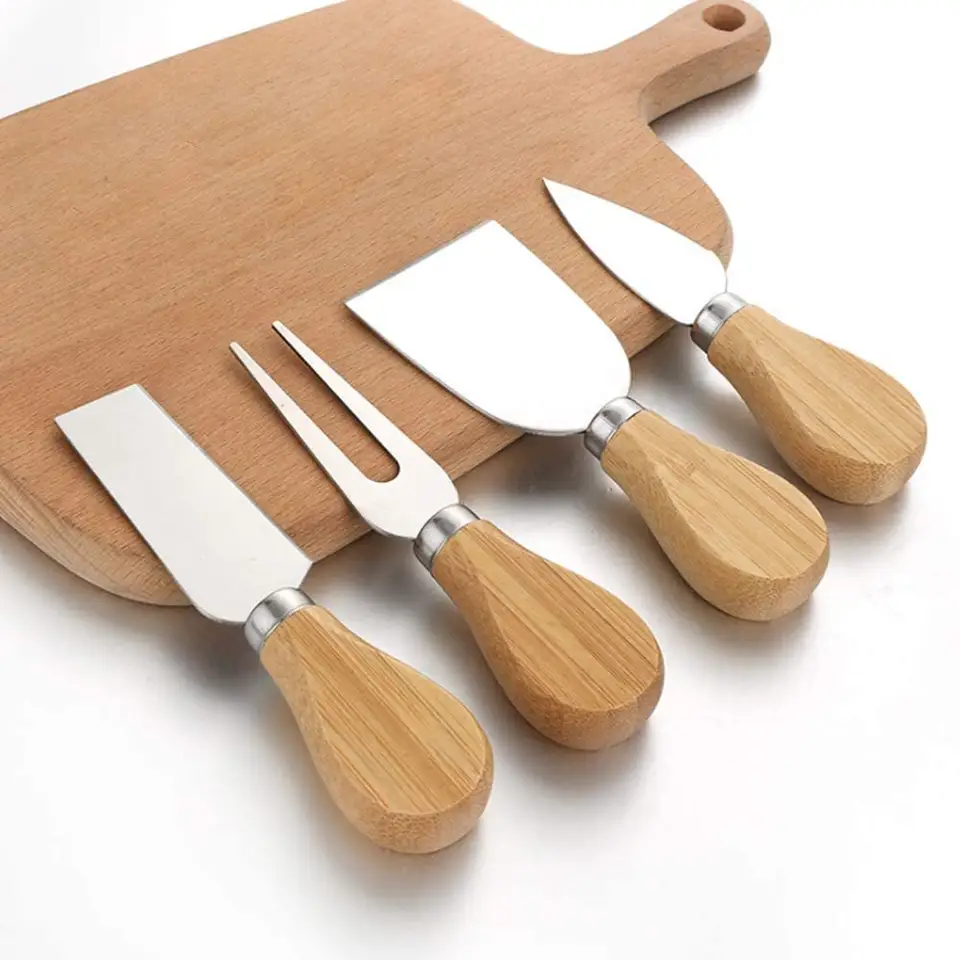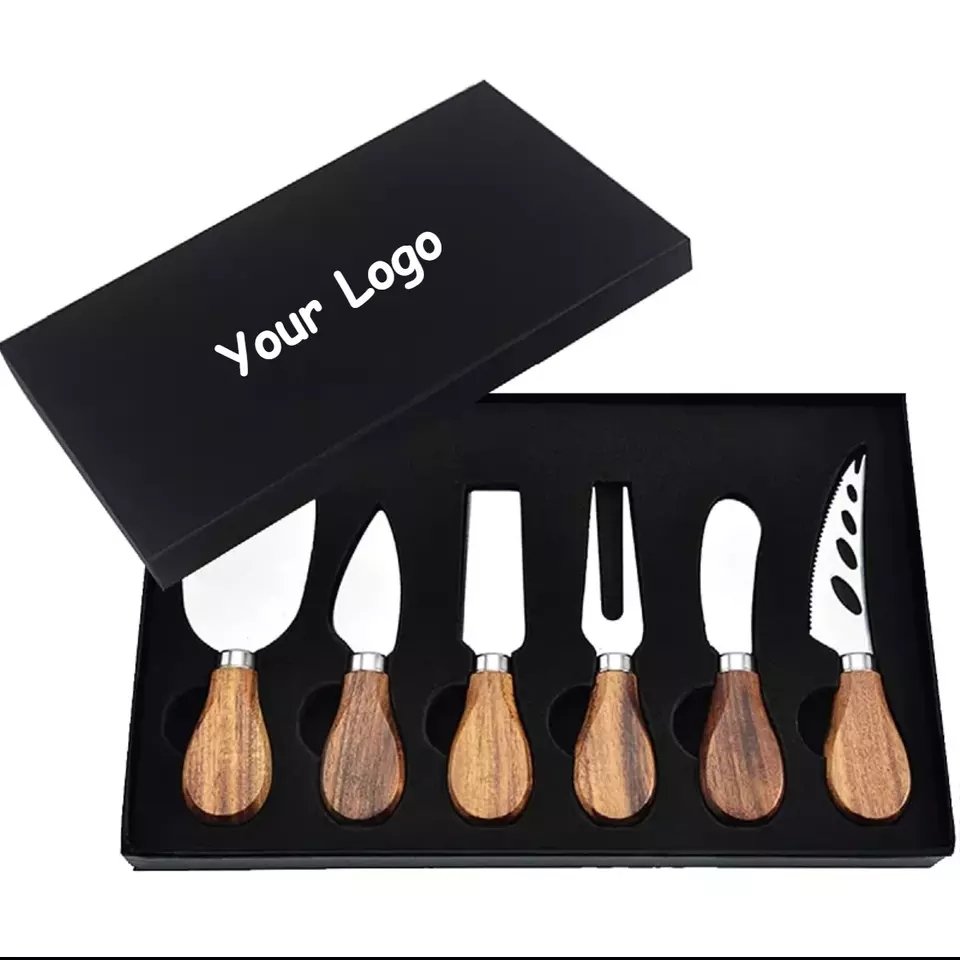Heading into the wild? Choosing the wrong camping utensils can ruin meals. Here’s how to pick gear that lasts and performs.
The best camping cutlery is lightweight, durable, and multi-purpose. Titanium or stainless steel utensils with foldable or nesting designs save space while standing up to campfire use.
Now let’s look at exactly what you’ll need for different camping scenarios and how to choose materials that won’t fail you when you’re miles from civilization.
Table of Contents
What is the Best Cutlery for Camping?
Your plastic picnic set will melt near the fire. What actually works?
Three top choices: titanium (lightest), stainless steel (most durable), and bamboo (eco-friendly). Look for designs with foldable or interlocking pieces to minimize pack space without sacrificing function.
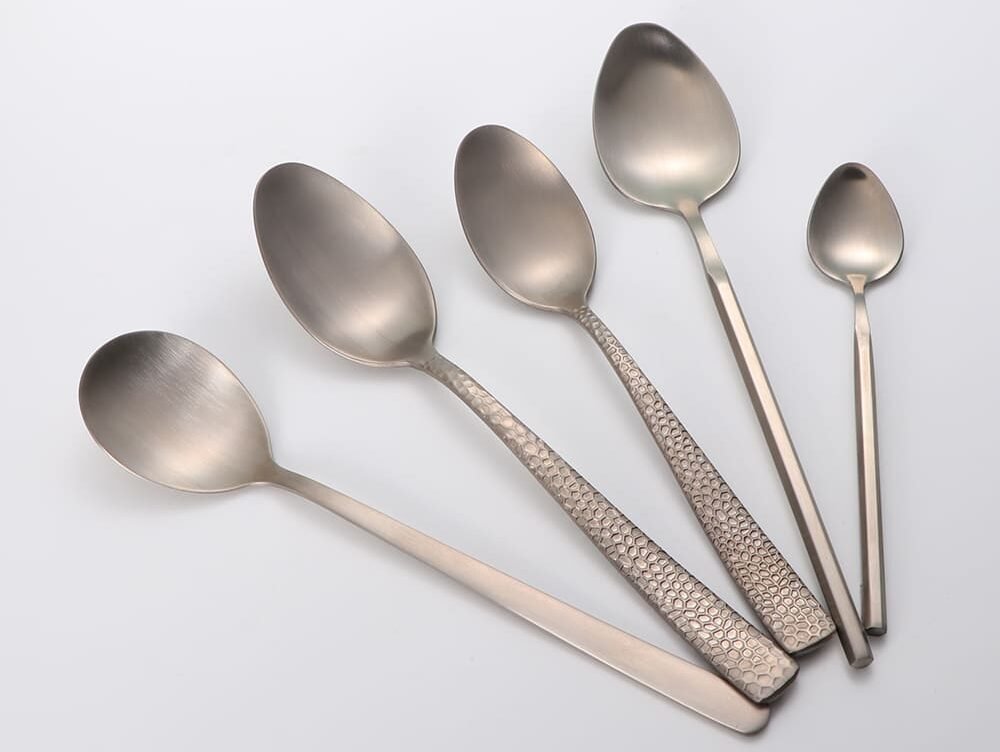
Comparing Core Materials
| Material | Weight | Durability | Heat Resistance | Best For | Price Range |
|---|---|---|---|---|---|
| Titanium | 5/5 | 4/5 | 5/5 | Long backpacking | $$$$ |
| Stainless | 3/5 | 5/5 | 5/5 | Car camping | $$ |
| Bamboo | 4/5 | 3/5 | 2/5 | Light day trips | $ |
| Plastic | 5/5 | 2/5 | 1/5 | Not recommended | $ |
Pro Tip: Choose titanium if weight matters most (backpacking), stainless for frequent use (base camps), and bamboo for short eco-trips.
What Utensils Do I Need for Camping?
Packing your entire kitchen drawer? Start with these essentials.
Must-haves: spoon (doubles as small ladle), fork with sturdy tines, and a sharp knife. Optional: spatula for cooking, tongs for fire use, and a spork if weight is critical.
The Minimalist vs. Comfort Setups
| Kit Type | Key Items Included |
|---|---|
| Backpacker’s Kit (Ultralight) | – Long-handled titanium spork – Folding pocket knife – Collapsible silicone cup (doubles as bowl) |
| Family Car Camping Set | – Stainless steel knife/fork/spoon set – Nylon spatula – Fire-resistant tongs – Multi-tool with can opener |
| Pro Upgrade | – LightMyFire’s titanium spork (with serrated edge) – Snow Peak’s folding knife/spoon combo – Sea to Summit’s Alpha Light set (only 1.6 oz total) |
Skip: Separate butter knives (use your main knife), full-size ladles (use your spoon), and anything with hollow handles (dirt traps).
What Material is Best for Eating Utensils?
Plastic melts, wood splinters – what actually survives camp conditions?
Grade 304 or 316 stainless steel resists rust and lasts decades. Titanium is lighter but pricier. For eco-conscious campers, bamboo works if kept dry and away from direct flames.
Material Deep Dive
| Category | Key Points |
|---|---|
| Stainless Steel Grades | – 304 (18/8): Affordable, rust-resistant (avoid saltwater) – 316 (Marine-grade): Ocean-proof, but heavier – 420: Cheaper, but stains easier |
| Titanium Advantages | – 45% lighter than steel – Safe with acidic foods (won’t react) – Cool-touch, grippy handles |
| Bamboo Care Tips | – Always air dry fully – Oil once a year with food-safe mineral oil – Avoid soaking in soups/stews (may warp) |
Testing Note: Many titanium sets now incorporate textured grips that outperform smooth steel in cold/wet conditions.
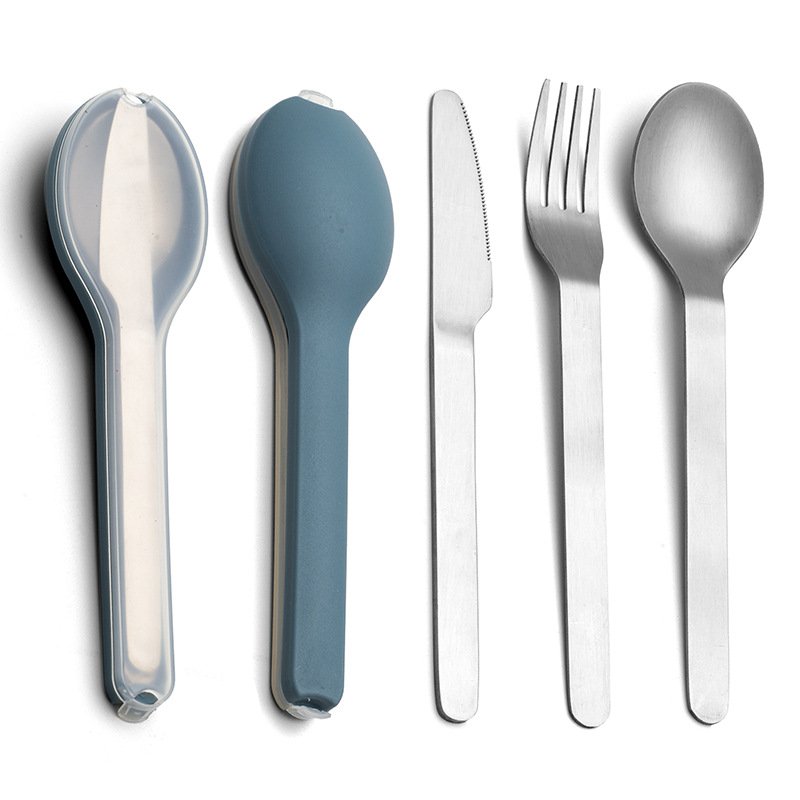
How Do You Pack Cutlery for Camping?
Heard that dreaded rattle in your pack? Here’s how to silence it.
Use a UL roll-up utensil wrap, repurpose a recycled snack pouch, or clip sets together with rubber bands. For ultralight, secure to your pack’s daisy chains with mini carabiners.
Packing Solutions by Trip Type
| Scenario | Best Storage Tip |
|---|---|
| Backpacking | – Wrap in microfiber towel (cleans + protects) – Use Toaks mesh sack – Slide into side bottle pocket for quick grab |
| Family Camping | – Pack in hard lunchbox with other tools – Use magnetic sets to avoid losing pieces – Color-code pouches per family member |
| Pro Hack | Store spork inside cook pot with stove (space saver) ⚠️ Remove before heating to avoid disaster! |
Do You Need a Knife When Camping?
Forgot your knife? Suddenly every meal becomes a struggle.
Essential for: food prep, gear repairs, and emergencies. Choose between a fixed-blade (most durable) or quality folding knife. Keep it sharp – a dull blade is dangerous.
Knife Selection Guide
| Knife Type | Blade Length | Best For | Top Pick Example |
|---|---|---|---|
| Pocket Folder | 2-3 inches | Light duty, slicing tasks | Opinel No.8 |
| Fixed Blade | 4-6 inches | Processing wood, food prep | Morakniv Companion |
| Multi-tool | 2-3 inches | Versatile small camp jobs | Leatherman Skeletool |
Safety Tips:
– Always cut away from your body
– Store in sheath when not in use
– Learn basic maintenance (sharpening, oiling)
– Check local laws on blade length restrictions
What is the Safest Material for Cutlery?
Some metals can leach chemicals into food – how to avoid this?
Food-grade 304 or 316 stainless steel contains no harmful coatings. Titanium is inert and safest for those with metal sensitivities. Avoid aluminum and cheap “stainless” blends that pit over time.
Material Safety Breakdown
Stainless Steel
✅ Safe if marked 18/8 or 18/10 (nickel improves resistance)
⚠️ Avoid 200-series (uses manganese, less stable)
Titanium
✅ Hypoallergenic, ideal for sensitive users
✅ No reaction even with acidic foods (tomatoes, citrus)
Plastic Risks
⚠️ BPA-free ≠ risk-free (other chemicals may leach)
⚠️ Scratches = bacteria traps, hard to clean
Aluminum Warnings
⚠️ Linked to potential health concerns in excess
⚠️ Reacts with acidic foods → off-taste & metal leaching
Lab Fact: High-quality titanium utensils often have a higher upfront cost but outlast steel by decades with proper care.
What is the Best Cooking Option for Camping?
Jetboil or cast iron? Your cookware determines what utensils you’ll need.
Backpackers: Lightweight titanium pot with long-handled spoon. Car campers: Durable stainless steel set with spatula and tongs. Always match your utensils to your primary cooking method.
Cooking System Pairings
🥾 Backpacking Stoves (Jetboil/MSR)
Long-handled titanium spoon → reaches deep into dehydrated meal pouches
✅ No knife needed — just for stirring & scooping
🍳 Cast Iron Skillets
Sturdy stainless steel spatula → handles high heat, scrapes well
Heat-resistant silicone grips → protect hands from hot handles
🔥 Open Fire Cooking
12″ tongs with silicone grips → safe distance + firm hold
Extra-long roasting forks → ideal for marshmallows & sausages
🍲 Dutch Ovens
Aluminum utensils → gentle on seasoning layer, no scratches
Lid lifter tool → doubles as spatula for stirring & serving
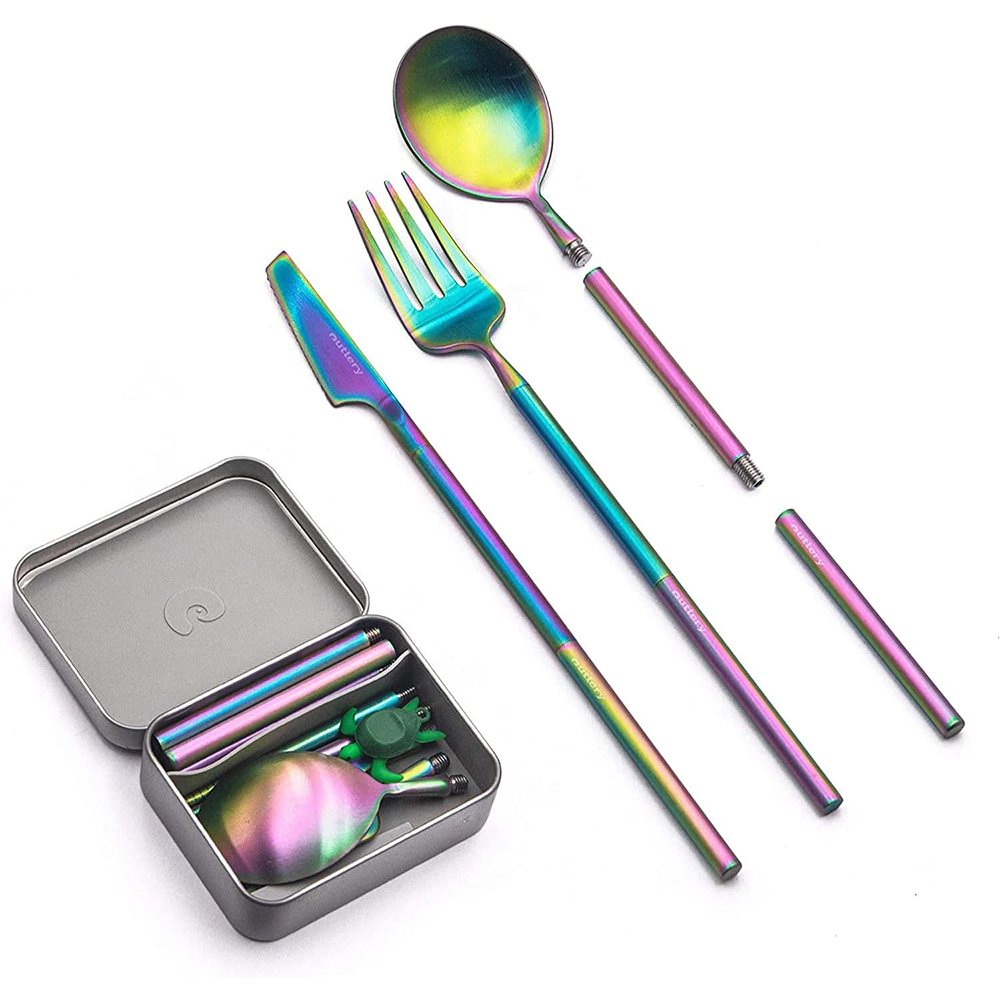
What is the Best Cutlery Grade?
Not all “stainless steel” is equal. What markings matter?
Look for 18/8 (304) or 18/10 (316) stamps – these indicate high nickel content for maximum rust resistance. 420 grades are cheaper but stain easily. “Surgical steel” is a marketing term without standards.
Decoding Steel Grades
✅ 304 Stainless (18/8)
Composition: 18% chromium, 8% nickel
👍 Pros: Affordable, widely available, safe for daily use
👎 Cons: Can pit or corrode if exposed to salty environments (e.g., sea air, salty soups)
✅ 316 Stainless (Marine Grade)
Added Element: 2-3% molybdenum
👍 Pros: Superior resistance to saltwater and acids — ideal for coastal or outdoor use
👎 Cons: 15-20% heavier and more expensive than 304
🚫 420 Grade (Cheap Junk)
Warning Signs: Often unmarked, lightweight, feels thin
❌ Cons: Rusts within months, prone to staining, found in dollar stores and low-cost sets
⚠️ Tip: If price looks “too good,” check for proper 18/8 or 18/10 marking
Manufacturing Note: Quality brands like Sea to Summit and Snow Peak only use 304 or better, while no-name brands often cut corners with 420 blends.
What is the Best Metal for Campfire Cooking?
Flames destroy cheap metals fast. What actually survives?
Cast iron reigns supreme for fire cooking, but is heavy. Titanium excels for backpackers. Aluminum distorts under high heat. Always choose campfire-safe lengths (10″+ handles).
Fire Cooking Metal Guide
🔥 Cast Iron
✅ Best for: Skillets, Dutch ovens, open-fire cooking
🔄 Care Tip: Season monthly with thin layer of oil (prevents rust, builds non-stick layer)
⚠️ Warning: Never plunge hot cast iron into cold water — can crack instantly
🌄 Titanium
✅ Best for: Ultralight grill grates, backpacking pots
👍 Pros: Won’t warp, discolor, or react with food
👎 Cons: Poor heat distribution — better for boiling, not frying
💎 Stainless Steel
✅ Look for: 304 (18/8) or 316 (marine-grade) for best durability
⚠️ Avoid: Thin-bottomed cookware — creates uneven hot spots that burn food
⚠️ Aluminum
✅ Safe Use: Only with heat diffusers or on gas stoves (avoid direct campfire)
⚠️ Warning: Melts at 1220°F — campfire flames can reach 1500°F+!
❗ Extra: Bare aluminum reacts with acidic foods (tomatoes, lemon) — use anodized only
Survival Tip: In a pinch, green hardwood sticks make disposable cooking utensils – just avoid resinous pine.
Smart campers choose titanium or 304+ stainless utensils matched to their trip type – backpackers prioritize weight, while car campers need durability. Always verify steel grades and pack utensils securely to prevent loss. With the right set, every meal outdoors feels like home.


